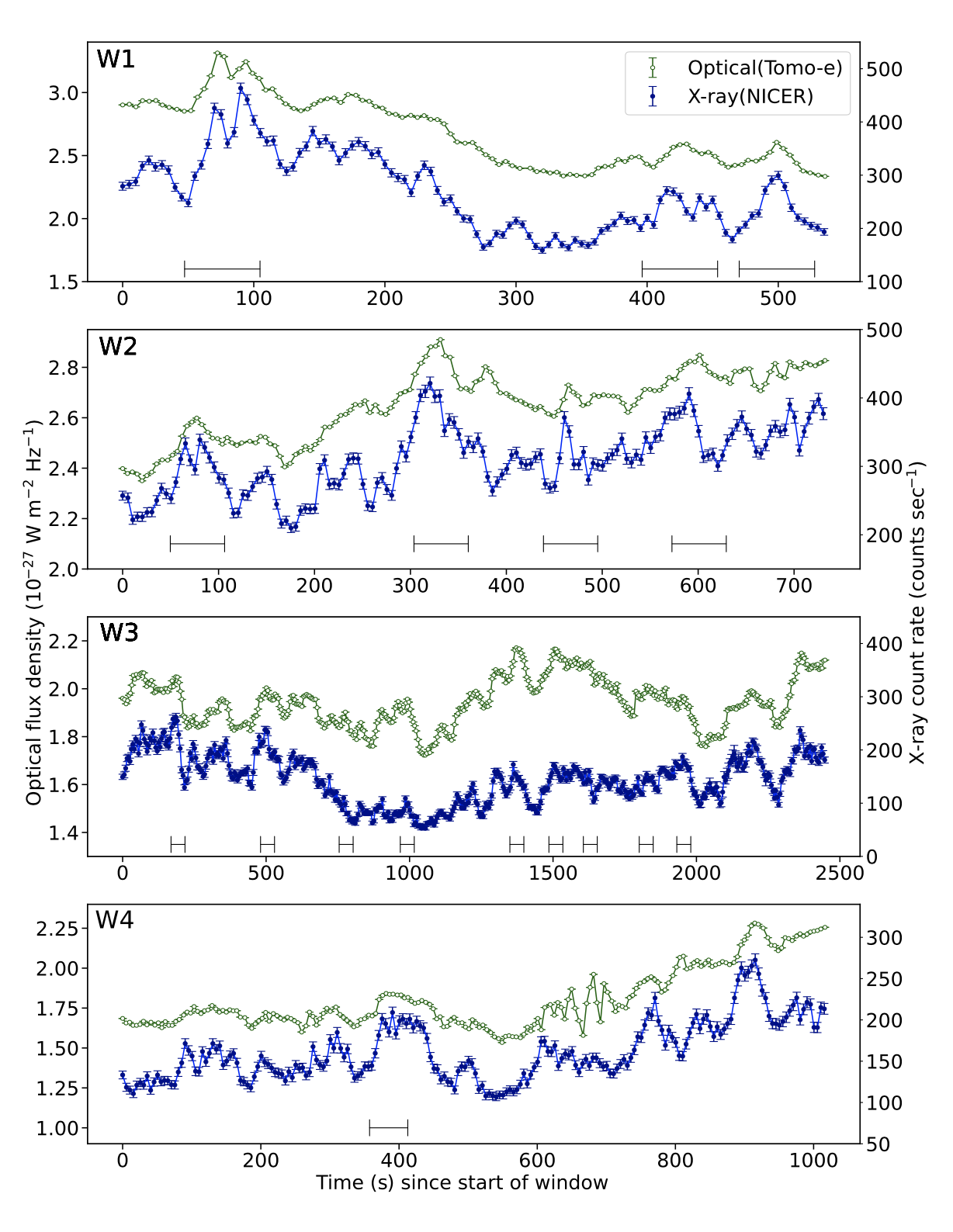NICER / ISS Science Nugget
for June 2, 2022
Sub-Second Synchrony for SS Cygni
The "dwarf nova" binary system SS Cygni, consisting of a white dwarf star and a low-mass companion star, is the brightest in this class of objects and exhibits visible-light outbursts at approximately monthly intervals. Since August 2019, its quiescent (that is, non-outburst) brightness has been slowly increasing at both optical and X-ray wavelengths. Rapid, random variability in this emission has been known for some time, but its origin has remained mysterious. The recent brightening, together with technological developments in high-speed data acquisition across the electromagnetic spectrum, have made it possible to probe this variability through simultaneous multi-wavelength observations.
In the fall of 2020, NICER observed SS Cyg in coordination with Tokyo University's 1.05-meter Kiso telescope, recently outfitted with the Tomo-e Gozen wide-field high-speed video camera. A total of four observations were carried out in the quiescent state, and highly correlated brightness variations between the two wavelengths were seen. The research team extracted local brightness peaks in each light curve with a binning interval of 1 second, and evaluated time lags between the optical and X-ray variations by using a cross-correlation function. Most peaks in the variability are found to exhibit significant optical lags relative to the X-ray emission, ranging from 0.26 to 3.11 seconds. These measurements represent the first detection of correlated variability, and the first lag measurements, in this system, and they are ascribable to reprocessing of X-rays, emitted near the white dwarf, in the surrounding accretion disk and/or the outer layers of the companion star. Moreover, the correlation was observed to change in the middle of one of the observations, with a simultaneous change in the X-ray spectrum.
These results, which provide new insights into the structure of the accretion disk and the turbulent flows within it, were published by Y. Nishino et al. in the Proceedings of the Astronomical Society of Japan. The paper was accompanied by a press release, and the story was picked up by multiple media outlets in Japan.

Figure: Light curves, in 5-second bins, of SS Cyg at visible-light (green) and X-ray (blue) wavelengths during observations on 2020 September 14 (W1), September 15 (W2), November 14 (W3), and November 18 (W4). Windows used to estimate time lags between optical and X-ray variations are indicated by horizontal bars.
<< Previous
Main Index